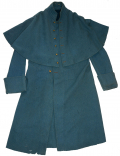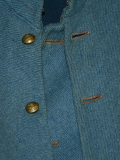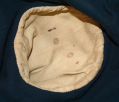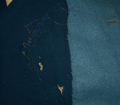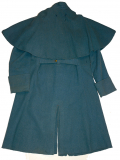site search
online catalog
CIVIL WAR SOLDIER-MODIFIED SCHUYLKILL ARSENAL INFANTRY OVERCOAT
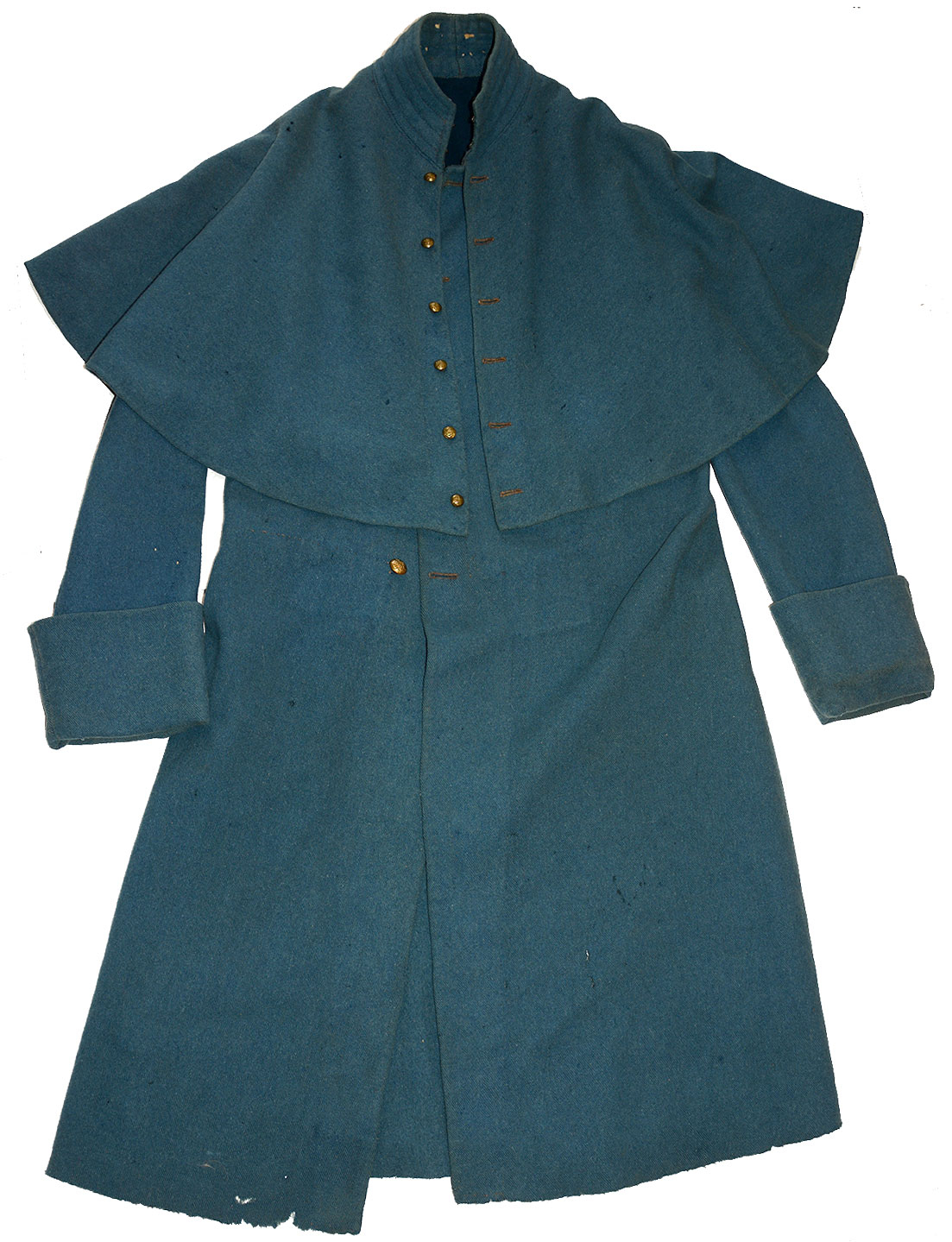
$5,500.00
Quantity Available: 1
Item Code: 1235-05
Shipping: Determined by Method & Location of buyer
To Order:
Call 717-334-0347,
Fax 717-334-5016, or E-mail
Once in the famed collection of John Henry Kurtz, this regulation Civil War sky-blue infantry overcoat (or greatcoat) is complete, all original, in very good condition and shows a wonderful field alteration by the soldier who added two exterior pockets in the lower chest. The coat is fully regulation, complete with cape, adjusting belt, lining and all buttons, and bears in the left sleeve the “3/S.A.” stamp, along with three dots, indicating it is a Size 3 product of the Schuylkill Arsenal, with the size repeated by three dots on the left sleeve, along with a “1” or “I” representing the inspector who accepted it or the seamstress who finished and supplied it.
The coat is the standard configuration: light blue in color, single breasted, fastened by five large general service eagle buttons down the front, and a two-piece adjusting belt on the rear waist, with single retaining loop, adjusting by a single large eagle button and two buttonholes. As is correct, the light blue cape is unlined, sewn at the base of the standing collar, which is 2-1/2 inches tall, with sloping front and two hooks and eyes. The coat fastens with six small general service eagle buttons, has a rolled bottom edge and comes down to about the soldier’s elbow. The bottom edge of the skirt is left raw. The sleeves are lined in white muslin, now a cream color, with the lining ending about 7 inches from end of the sleeve, allowing for a deep, turned back cuff. The body is lined in dark blue flannel that, given the production at Schuylkill Arsenal, is likely the same as used in sack coats. The interior and exterior seams are tight and the coat is solid.
The soldier modified the coat by added two exterior pockets. These are competently, but not professionally done, and the pocket on the soldier’s right breast is actually better done than the one on his left. They are vertical, slanting slightly to the outside toward the bottom, and start midway between the second and third button from the top. The pocket opening on the soldier’s left is about 6 ½ inches long and on his right about an inch longer. The left pocket starts about 6 inches from the lapel, about even with the second button, and the right about 7 ½ inches from the lapel, roughly between the second and third, but would be a bit closer the center line when the coat was buttoned. Both pockets have nicely turned over edges, with the openings ending at about the fourth button (second from the bottom.) The right pocket bag is white muslin like the sleeve linings and is between the lining and exterior of the coat. The left is more amateur, using a thinner white fabric sewn against the dark blue body lining and closed off at the bottom by sewing it to exterior fabric of the coat, with the stitching showing as very uneven on the lining. Both pockets are fairly deep, extending to the end of the body lining, even with the lowest button of the coat. Their placement on the chest was likely meant to accommodate wear of cartridge box sling and waistbelt.
The coat is solid and shows just few small, scattered moth nips to the body and five or six small holes to the inside lining of the collar at the rear that show some of the lighter colored interlining. The cape has a dozen or so small moth bites on the right shoulder and one or two on left elbow. The upper center rear has one hole about ¼ inch wide and 1-½ inches long, just right of center and 1-½ inches down from the collar, with three smaller, pencil eraser size ones just below it, and one off to the left about ¼ by ½ inch. These could be backed, but the fabric is stable and none of these are very noticeable since they lie against the upper back of the coat which is the same color as the cape.
The coat has strong visual appeal and nicely combines very good condition with clear signs of issue and field use in the alteration by the soldier. The addition of the pockets was a commonsense solution to a common problem, less of convenience than necessity. Not only did the overcoat as issued have no pockets in which a soldier might store things, there was no place a soldier might thrust his hands for warmth. Unless he bought his own gloves or mittens or had some sent from home, he could only resort to turning down his cuffs to protect his hands in cold weather - it was not until 1871 that the army got around to issuing mittens. [sr][ph:L]
~~~~~~~~~~~~~~~~~~~~~~~~~~~~~~~~~~~
THIS ITEM, AS WITH ALL OTHER ITEMS AVAILABLE ON OUR WEB SITE,
MAY BE PURCHASED THROUGH OUR LAYAWAY PROGRAM.
CLICK HERE FOR OUR POLICIES AND TERMS.
THANK YOU!
Inquire About CIVIL WAR SOLDIER-MODIFIED SCHUYLKILL ARSENAL INFANTRY OVERCOAT
For inquiries, please email us at [email protected]
Most Popular
Historical Firearms Stolen From The National Civil War Museum In Harrisburg, Pa »
Theft From Gravesite Of Gen. John Reynolds »
Cavalry Carbine Sling Swivel »
Fine Condition Brass Infantry Bugle Insignia »
featured item
MAMALUKE SABER MANUFACTURED IN ENGLAND
Manufactured: England Maker: William Harvey Year: 1840 - 1850 Model: Mameluke Size: 30.25 Condition: VG Wonderful Mamaluke Saber manufactured in England. Most likely for a British officer but possible it was imported to the US market. … (870-74). Learn More »



